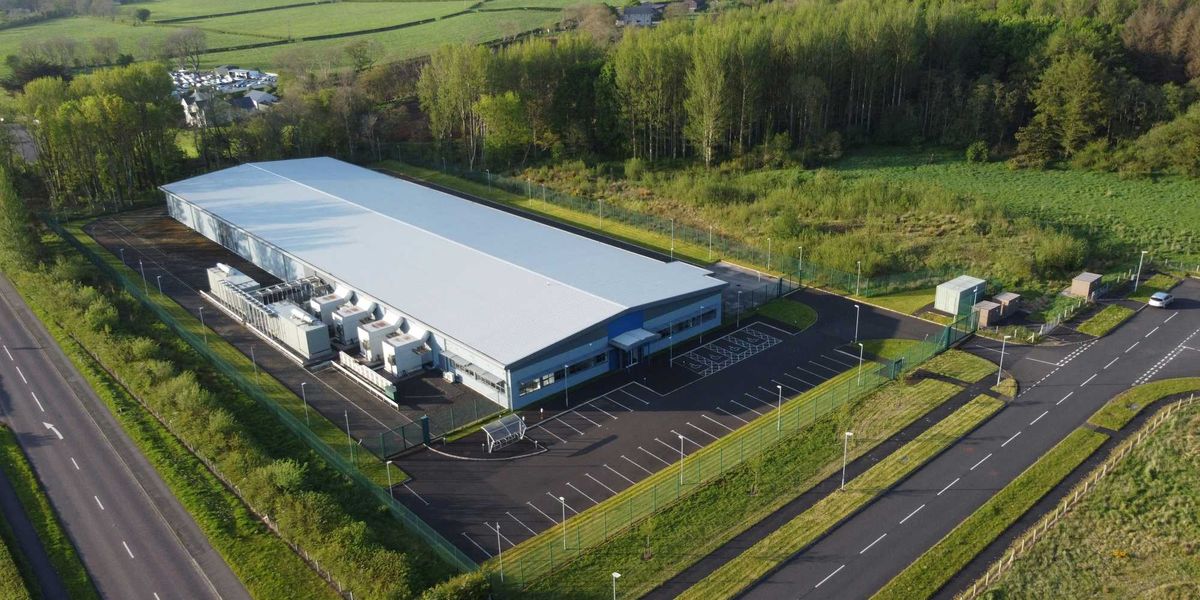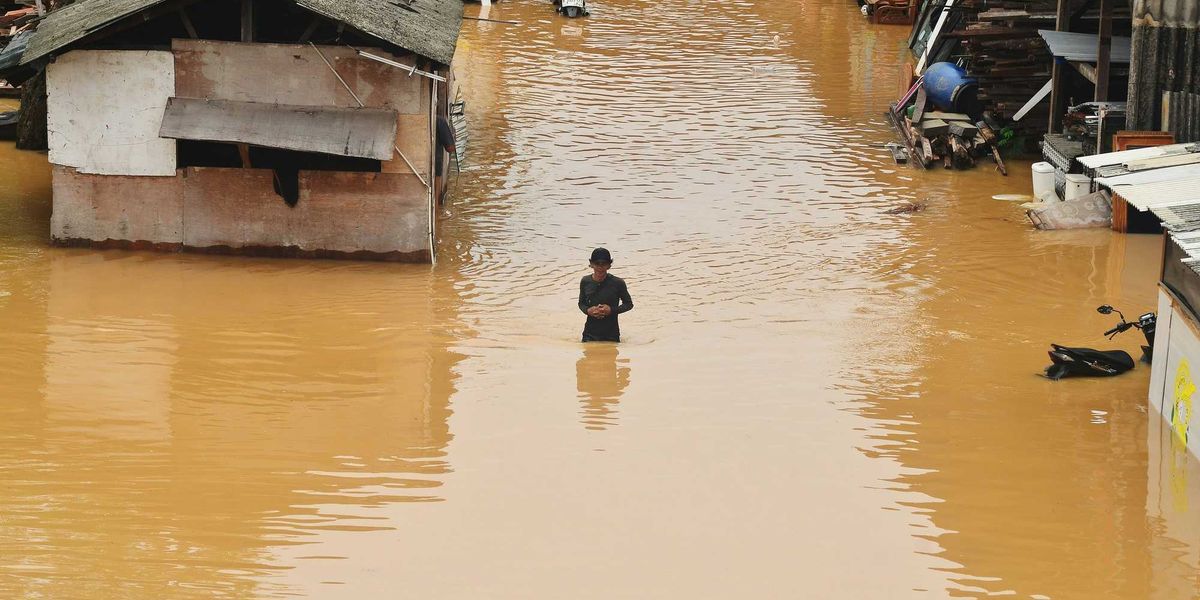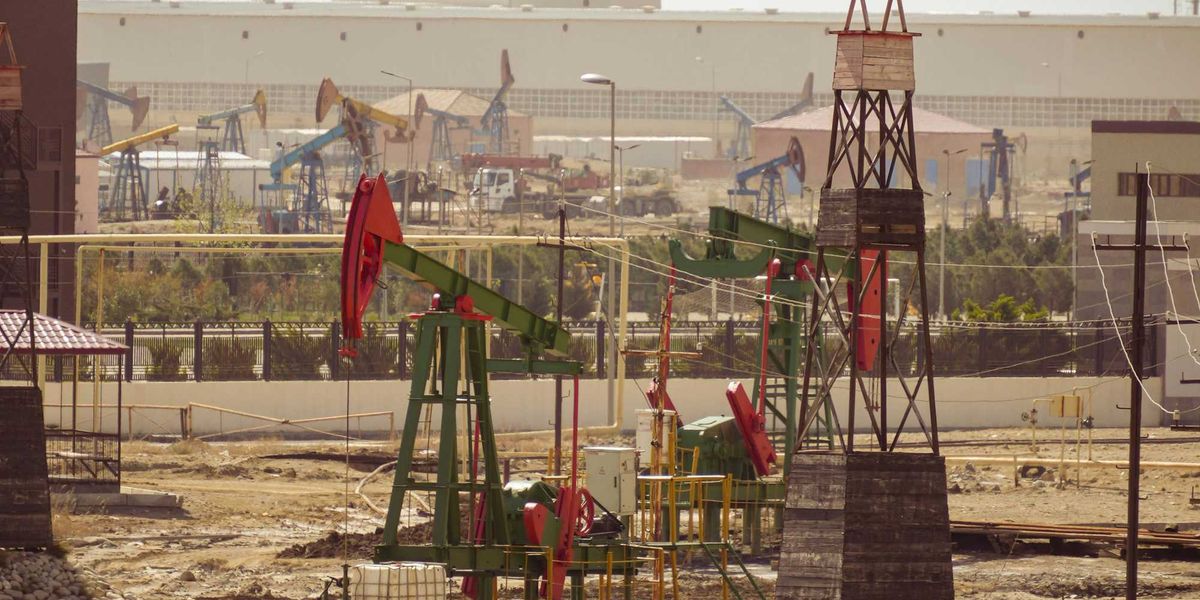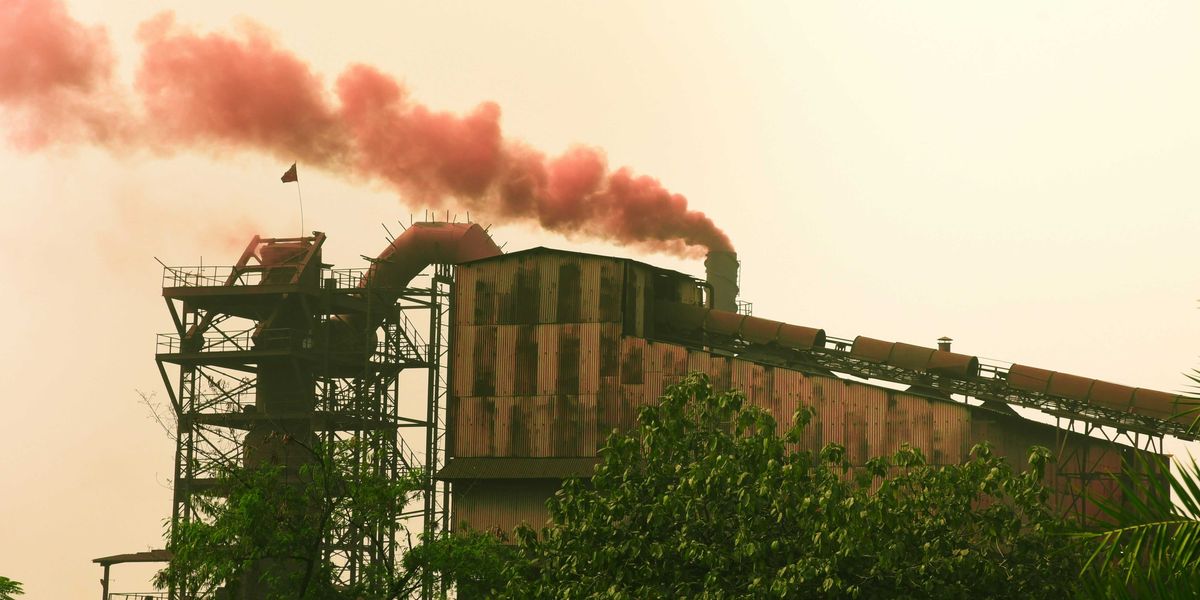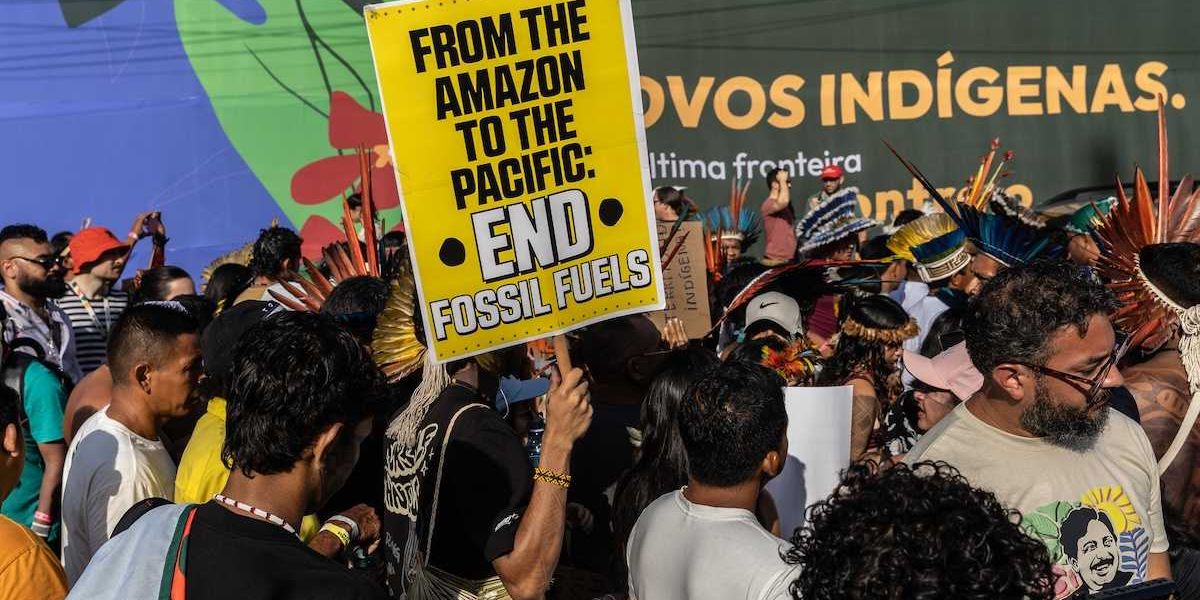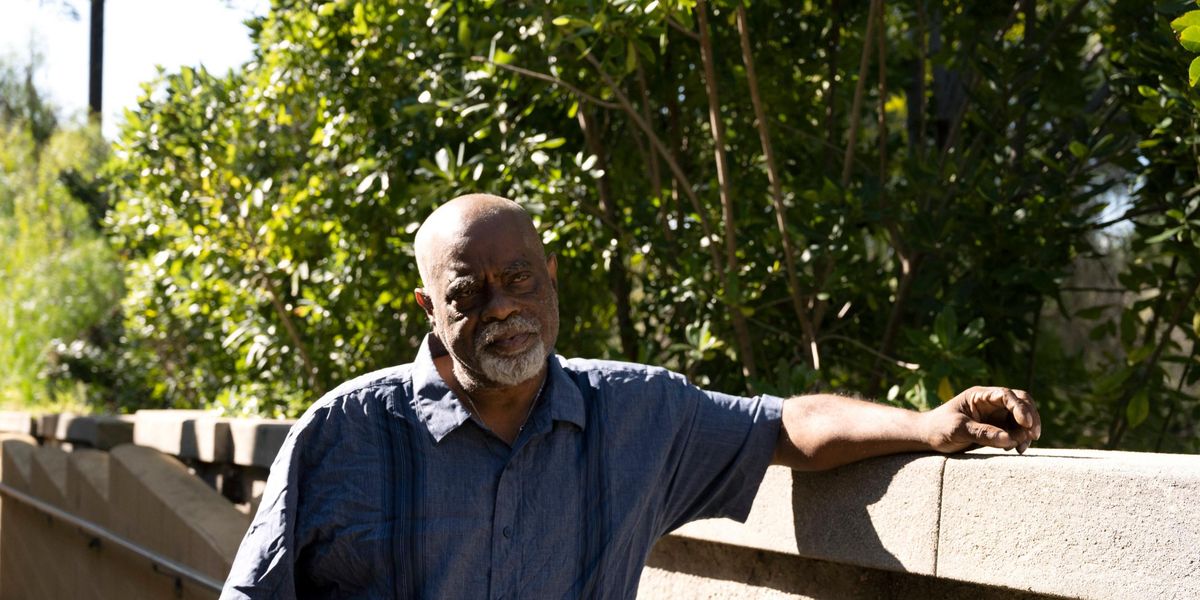
Will California’s new oil and gas laws protect people from toxic pollution?
California will soon have the largest oil drilling setbacks in the U.S. Experts say other states can learn from this move.
LOS ANGELES — “You’d never know it by looking at it,” said Don Martin as he faced a tall green wall decorated with a row of bushes. “A danger that’s hidden from view.”
Beyond the wall is the Murphy Site, an active oil drilling project operated by E&B Natural Resources that uses chemicals residents believe are contributing to sinister health problems. For 12 years, Martin has lived next door alongside dozens of families in a yellow low-income housing complex with a basketball court and playground.
Located in the West Adams neighborhood of south Los Angeles, the drill site is surrounded by a senior’s home and a medical clinic for AIDS patients. Three schools stand a block away.
The site is wide open, allowing emissions to waft into the air. Martin’s apartment is about 200 feet from the wall. A sign on the gate reads: “Warning: this area contains chemicals known to the state of California to cause cancer or birth defects or other reproductive harm.”
His wife was diagnosed with brain cancer and his granddaughter had Hodgkin’s lymphoma. “I think it’s all related to this sign,” he told EHN.
His granddaughter was eight when she had an operation to remove a tumor in her chest and endured chemotherapy. Her hair fell out, she felt nauseous and she was too exhausted to play with friends. Martin told her the oil site was to blame, and she asked him why they didn’t move. “This is low income, we got nowhere to go,” he said he told her.
She is now in remission, but his wife — his highschool sweetheart and spouse of 50 years — didn’t survive. “I sat there and held her hand and watched her die. That’s something I got to deal with the rest of my life.”
Like Martin and his neighbors, there are 40,000 oil fields globally with six million people living and working nearby, according to a 2019 study that found oil and gas development is associated with cancer, liver damage, immunodeficiency and neurological symptoms. Oil and gas development emits benzene and formaldehyde, both carcinogens. The drilling also emits methane, a potent greenhouse gas that increases global heating.
Los Angeles is home to the largest urban oil field in the U.S. and about 1,000 active oil and gas wells are sprinkled across the city, next to hiking trails, homes and schools. In Los Angeles County, half a million people live within 1,320 feet of more than 5,000 oil and gas wells, according to a 2014 report; and Latinx, African American and Asian American residents are more likely than white residents to live near oil and gas wells. Statewide, people of color made up 92% of the 1.8 million people living within a mile of an oil and gas site, the same report found.
Yet California is one of the few oil-and-gas-producing states without minimum distance requirements between homes and fossil fuel sites, according to a 2020 analysis. Maryland has the largest distance requirements, at 1,000 feet. Pennsylvania requires 500-foot setbacks from unconventional oil and gas wells. Arkansas has the smallest setbacks, at 100 feet. Other states, like Washington and New York, have banned fracking entirely.
Now, after more than a century of fossil fuel production in California, the tide is turning.
On Dec. 2, the Los Angeles city council passed an ordinance to phase out oil and gas drilling. In September, the Los Angeles County board of supervisors passed a similar ordinance to phase out drilling in unincorporated areas. In September, governor Gavin Newsom signed a law, SB-1137, that goes into effect Jan. 1, 2023, banning new oil and gas drilling within 3,200 feet of homes and schools — the largest setback requirement of any state. The new laws recognize that fossil fuel extraction contributes to climate change while also harming residents who are primarily Black, Indigenous and people of color. The Biden administration has also promised funding to clean up drill sites.
The California Independent Petroleum Association is fighting the state law by gathering signatures for a petition to “Stop the Energy Shutdown.” In fact, the petition asks for a referendum on SB-1137, which could slow or stop the law.
Martin is skeptical that the new laws will have an immediate impact. While the city will no longer issue new drilling permits, some companies will have 20 years to wind down their activities.
“We’ll be long dead before they phase those sites out,” he said. “If you’re going to do something, stop it now.”
Toxic chemicals from oil drilling
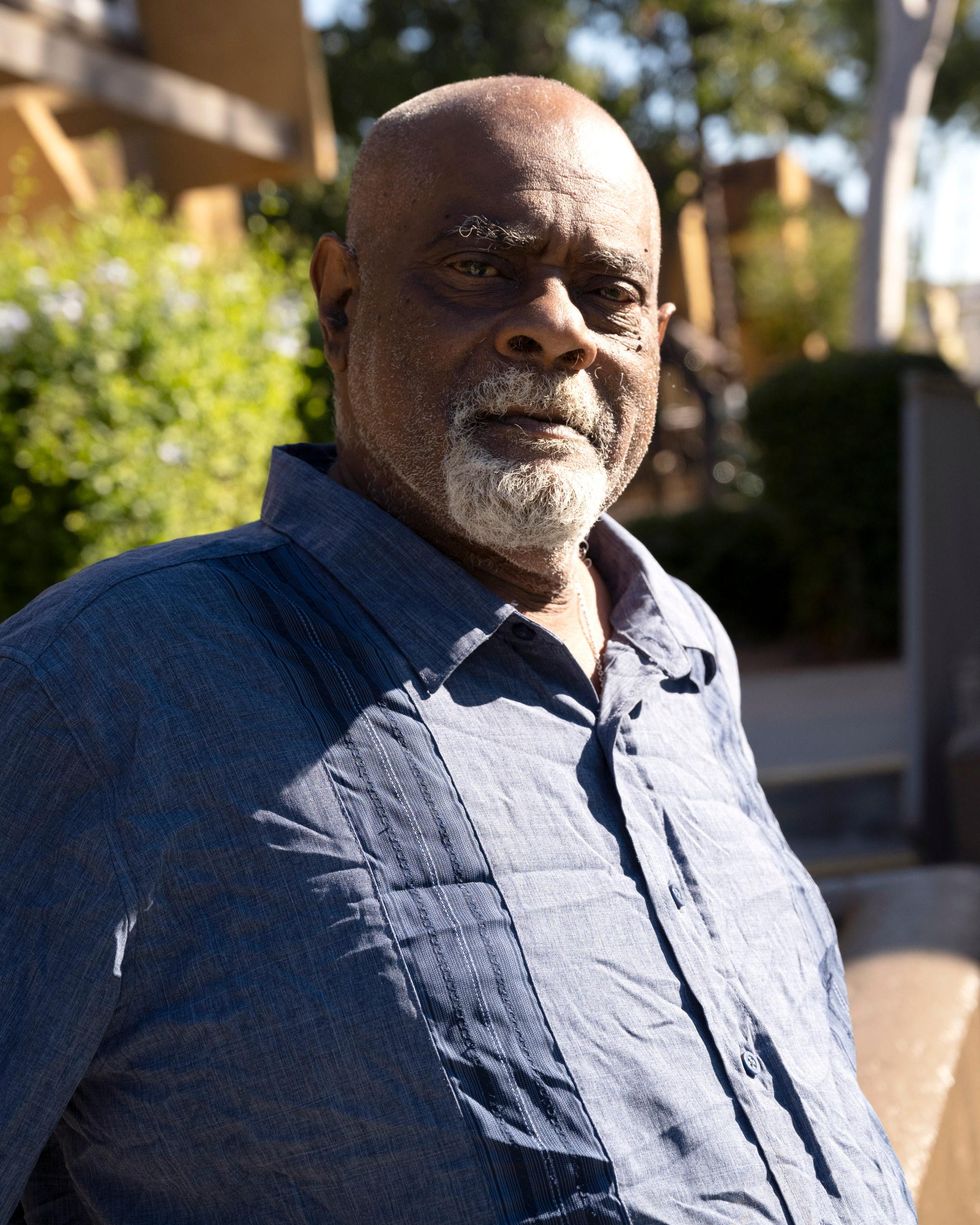
The Murphy Drill site is located just yards away from the St. Andrews Gardens apartment complex in the West Adams district of Los Angeles. Don Martin has been a resident of the apartments for the past 10 years.
Credit: Nīa MacKnight
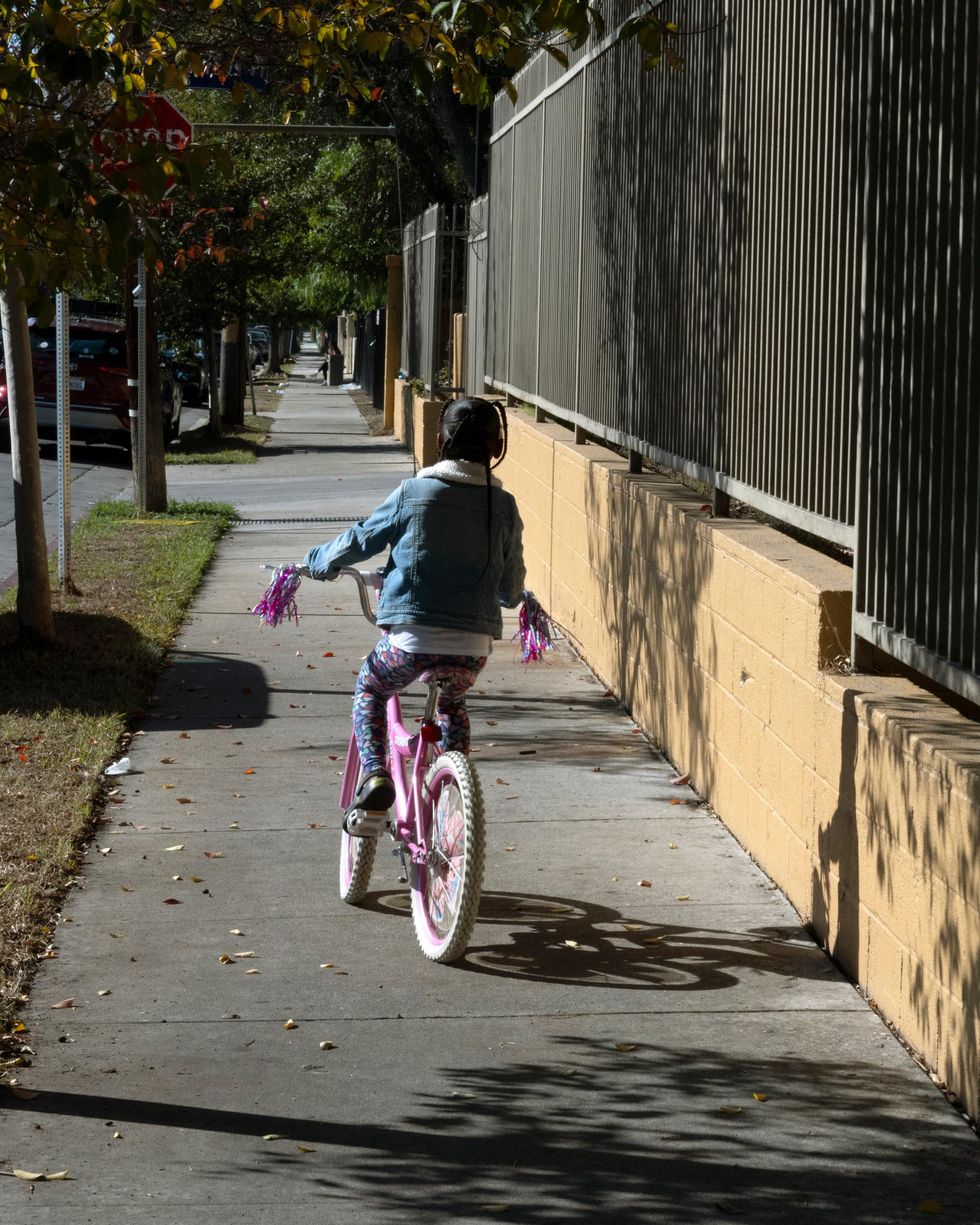
Kdyn Childress, 6, rides her bicycle past the St. Andrews Gardens apartments in South L.A. The Murphy oil drill site, which operates active oil and gas wells, lies just a few hundred feet away from apartments.
Credit: Nīa MacKnight
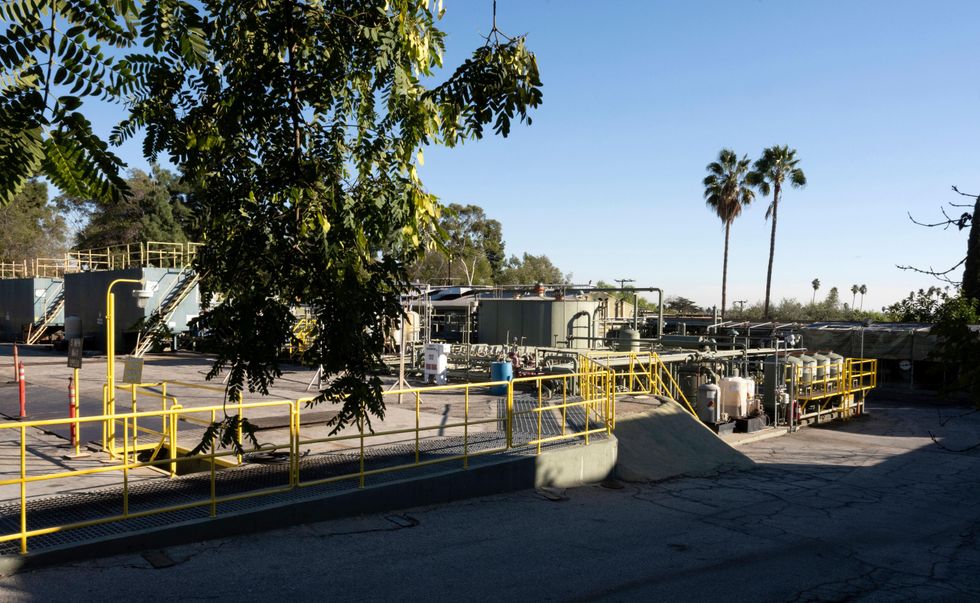
The Murphy oil drill site in South L.A. contains 22 active oil and gas wells and 7 injection wells.
Credit: Nīa MacKnight
In the 1890s, oil drills began springing up in southern California, and by 1930, Los Angeles was producing nearly a quarter of the world’s oil, according to STAND-LA, an environmental justice coalition of community groups. Conventional oil has dwindled, but new techniques like fracking and acidization have enabled continued extraction.
The growth of oil and gas development has placed health hazards near millions of people: an estimated 17 million U.S. residents live within one mile of an active oil or gas well, according to a 2017 analysis.
In 2003, Jennifer Blue moved into a West Adams home two blocks from the Jefferson Site, operated by mining and energy firm Freeport McMoRan (in 2016 the company’s California assets were acquired by Sentinel Peak Resources) Like the Murphy Site, it was hidden behind a wall and shrubs, so she had no clue she lived near an active oil site. After a year, in 2004, she moved into the house where she now lives, located between the two drilling sites — 3,400 feet from the Murphy Site and 2,300 feet from the Jefferson Site.
Around 2012, her church began to fight the Jefferson Site. That’s when she learned that the chemicals in use behind the walls were linked to miscarriages. By then, she had experienced two miscarriages — one in 2008 and another in 2012. Her friends who lived nearby also suffered miscarriages.
“I remember just feeling a pit in my stomach and feeling simultaneously really sad and really angry,” she told EHN.
Several studies have linked oil and gas development to increased risk of birth defects, infertility and miscarriages. A 2016 review of the literature found moderate evidence for increased risk of miscarriage, prostate cancer, birth defects and decreased semen quality from exposure to oil and gas extraction.
Reproductive issues are not the only health effects associated with oil and gas production. Studies in Pennsylvania and Colorado have linked oil and gas extraction to higher risk of leukemia in young people.
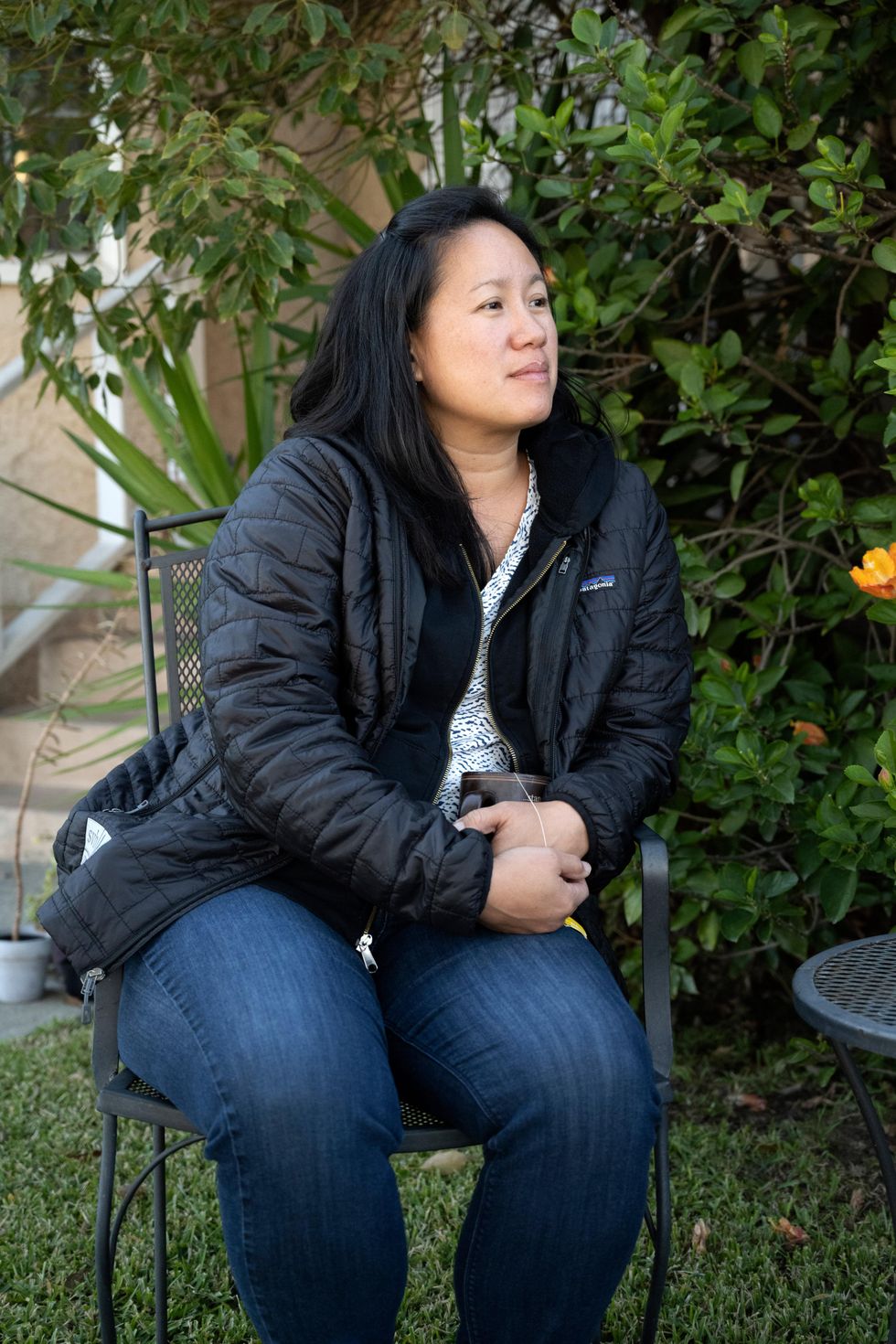
Jennifer Blue at her home in South Los Angeles, California. Her active voice in the community has inspired others to share their experiences of developing health issues due to living close to oil wells.
Credit: Nīa MacKnight
Another study, co-authored by Jill Johnston, associate professor of population and public health sciences at the University of Southern California’s Keck School of Medicine, found that residents living less than 656 feet from and downwind of oil and gas development in Los Angeles’ Las Cienegas oil field had lower lung function. “We saw similar impacts to that of living with a smoker,” Johnston told EHN.
Another paper she co-authored found high methane concentrations near three oil and gas facilities and a natural gas pipeline in south Los Angeles. High levels of methane exposure can also cause nausea, vomiting, headaches and dizziness.
Johnston also recently published a study that examined the toenails of more than 200 Black, Latinx and Asian people living within one kilometer of the Las Cienegas oil field. She explained that when people are exposed to toxic chemicals, they can end up in different places in the body. “Toxic metals can deposit in toenails,” she said.
The results showed elevated levels of nickel, the most abundant trace metal in oil; and manganese, which is also linked to oil. Nickel exposure is associated with cancer and cardiovascular diseases and manganese is linked to neurological illnesses like Parkinson’s.
Johnston can’t say definitively that oil drilling caused toxic metals to accumulate in people, but when the two metals are found together, it can be a signature of oil.
“These exposures aren’t naturally found, typically, in the body, and so when they’re at elevated levels it could be a concern,” Johnston said.
Will new laws address environmental racism?
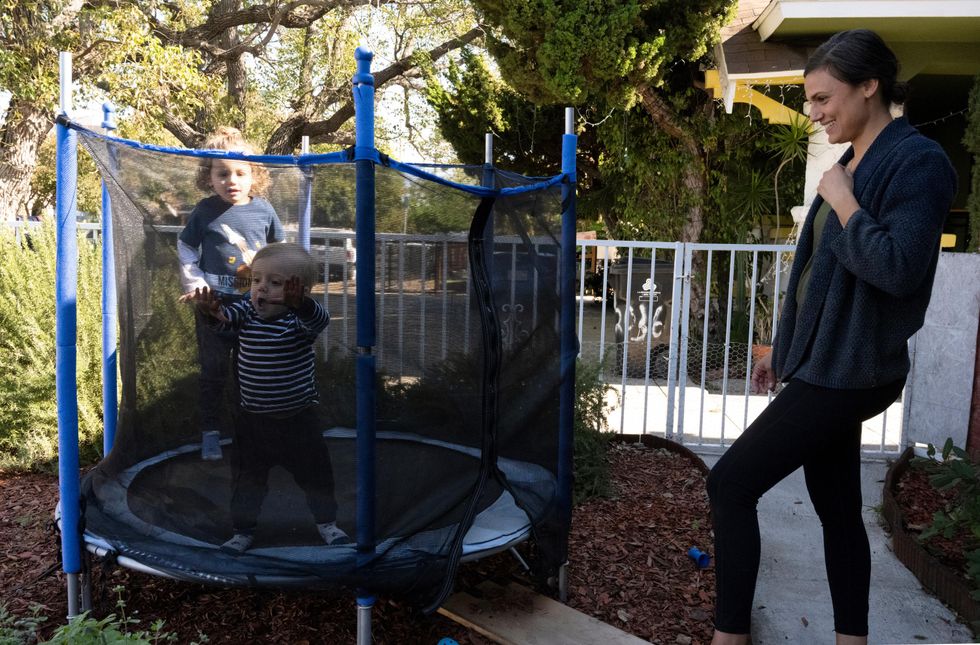
Corissa Pacillas Smith and her children Jethro, 3.5 and Fen, 1, live less than a mile away from the active Murphy oil site in South Los Angeles.
Credit: Nīa MacKnight
For five years, Corissa Pacillas Smith and her husband lived about 500 feet from the Jefferson Site, in south Los Angeles. She saw workers in Hazmat suits at the site mere feet away from people’s windows. She experienced headaches from rotten egg smells, diesel fumes and the noise of metal pipes repeatedly driven into the ground.
“You have these intense smells wafting right into my living room,” she told EHN.
Smith was one of a group of neighbors who came together to organize against the Jefferson Site and began documenting violations.
In 2016, EarthJustice filed a petition for abatement of public nuisance, which prompted a public hearing. In 2017, the city’s zoning department found the Jefferson Site in violation of its conditions. The company decided it was too expensive to comply, and halted operations. EHN sent a list of questions to Sentinel Peak Resources, E&B Natural Resources and the California Independent Petroleum Association about these and other issues, but received no response.
In 2017, city council president Herb Wesson introduced a motion calling on the city’s petroleum administrator to eliminate oil drilling in residential areas.
Years later, in December 2022, the resulting ordinance would amend the city’s municipal code to phase out oil drilling by immediately banning new oil and gas extraction and requiring cessation of all existing oil and gas operations within a 20-year period. The 20-year period will give operators time to recoup investments, however, the city is also studying whether it can shut down some wells sooner if operators recoup their investments earlier. The city is also drafting a policy that would require proper abandonment of wells and site remediation within three-to-five years of operations ending and the city says oil companies will shoulder that responsibility.
The Los Angeles County Board of Supervisors passed a similar measure for the unincorporated parts of the city. The proposed ordinance would ban new oil wells and production facilities and give existing projects 20 years to halt operations. It also establishes regulations for existing extraction, including site signage, comment and complaint logs, requirements for site maintenance, bonds of existing wells and standards for abandonment and restoration.
The state has a new oil drilling law, too. SB-1137, which comes into effect Jan. 1, 2023, prohibits the Geologic Energy Management Division in California’s Department of Conservation from approving any notice of intention from a fossil fuel operator within 3,200 feet of a “sensitive receptor,” which includes homes, schools and healthcare centers.
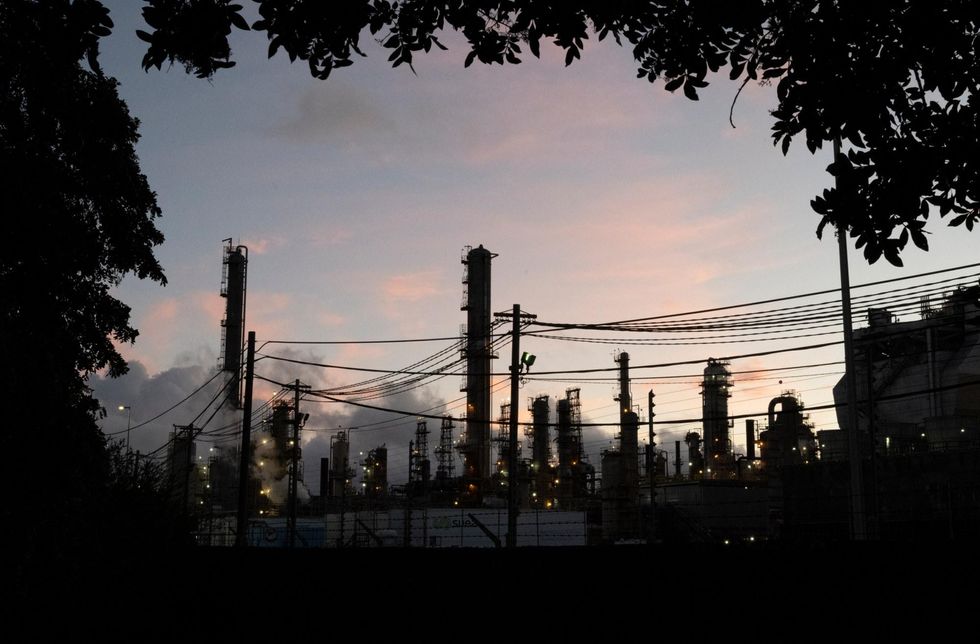
Residents in the South Bay area of Los Angeles witnessed a near catastrophic accident when an explosion occured at the Torrance Refinery in 2015.
Credit: Nīa MacKnight

Jethro Pacillas Smith, 3, plays with a toy car at his home in South L.A., located just a few blocks away from the Murphy oil drill site.
Credit: Nīa MacKnight
Beginning in 2025, the law will require oil and gas production facilities and wells within the 3,200 foot “health protection zones” to comply with health and safety requirements related to sound levels, dust and particulates beyond property lines, emissions and vapor venting, and chemical analysis of water resulting from operations. Operators within a health protection zone must submit leak detection and response plans to the state division by January 2025, and implement those plans by Jan. 1, 2027. Operators must also hold public workshops as part of developing their leak detection and response plans. Violation of these requirements would be considered a crime.
Both the city’s draft ordinance and the new state law recognize that oil drilling hazards primarily harm communities of color, but they do little to immediately alleviate environmental racism. The real impact of the new laws will be felt by BIPOC communities in Los Angeles 20 years from now.
Rabeya Sen, director of policy at Esperanza Community Housing Corporation, one of the groups on the STAND-LA steering committee, has been involved in the fight against neighborhood drilling since 2014. Back then, the groups learned about the regulatory system and realized it was broken. “Because it was broken — whether by design or not — it was really putting industry profits over public health,” she told EHN.
She said the city ordinance passed on Dec. 2 was a “huge victory” for the community, but she had mixed feelings. As they celebrated, STAND-LA also called on city council members to resign for racist remarks on a recently published recording. “This one policy is one piece of so much more that the city has to do to really advance racial justice,” Sen said.
“It’s a start,” she said of the new city ordinance, acknowledging that it will take time before it has an impact. “I think 20 years is too long.” But she added that the city is studying amortization. “Our sincere hope is that they will find that the phase out needs to be much shorter than the current 20 years.”
Between nuisance abatement laws shutting down individual sites and the city ordinance phasing out drilling long term, she said one is not better than the other — the strategies work in concert with each other. She said STAND-LA set a goal in 2014 of creating a city where there was no oil drilling. That goal required long- and short-term strategies. “The nuisance abatement [laws] have been helpful because while we work toward this long term goal that took almost a decade, we still have to find ways to try to defend ourselves from the oil industry in the short term,” she said.
Could California oil and gas laws be a model elsewhere?
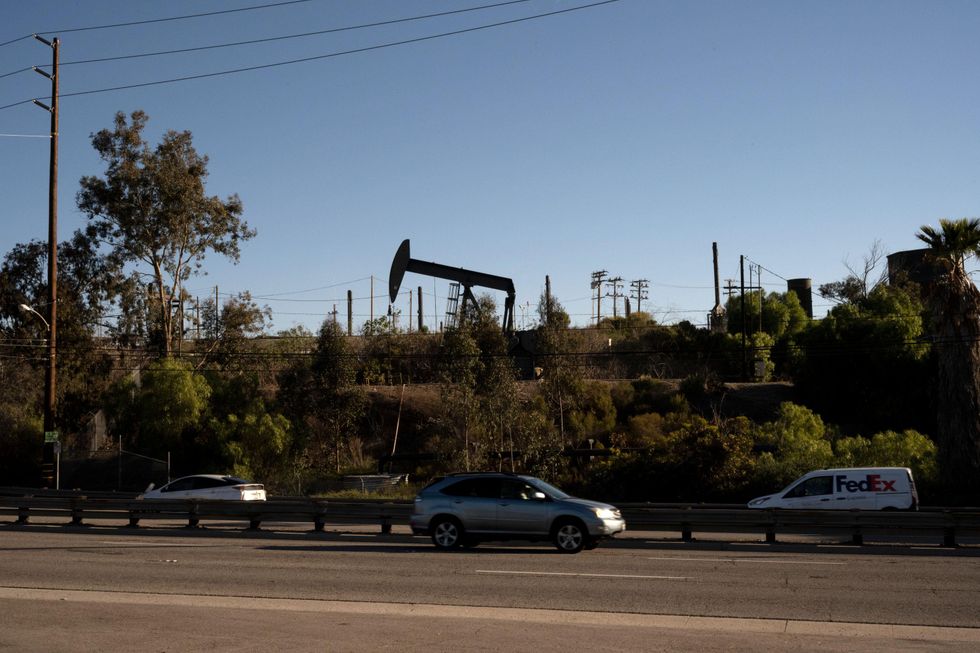
The Inglewood oil field in Los Angeles County produces nearly 2.5–3.1 million barrels of oil each year. It is considered the largest urban oil field in the United States and more than one million people live within five miles of the site.
Credit: Nīa MacKnight
Nicole Deziel, associate professor of epidemiology at the Yale School of Public Health, said there is no scientifically established distance that would keep people safe — studies have found health risks up to and more than 3,280 feet from oil and gas wells.
She called California’s 3,200-foot setback “a positive step for public health,” while adding that setbacks don’t remove the source altogether. “Eliminating new drilling and phasing out existing wells is also a very powerful tool.” She said removing oil wells will both protect public health and address climate change.
“It would be great for public health to see other states following California’s lead and re-evaluating their setback policies and whether or not their setbacks really reflect the current science,” she told EHN.
After shutting down the Jefferson site, West Adams residents are turning their attention to the Murphy site. They hope to use the nuisance abatement strategy to stop drilling, as they have documented a long list of violations and health hazards at the site over the past two years.
For now, extraction continues.
Blue said as long as the drill sites are operating, additional protections are needed. “Twenty years without any of the protections is just 20 more years of poisoning.”

